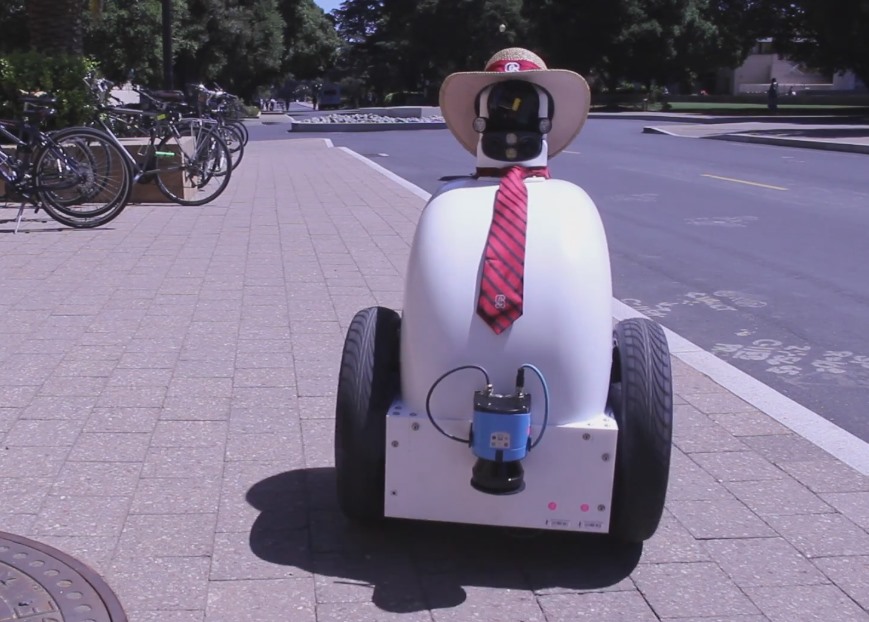In an era where the line between human and machine continues to blur, Stanford’s nimble innovation, the Jackrabbot, is shining a light on the challenging art of pedestrian navigation. Designed to decode the unspoken norms of human behavior in crowded spaces, Jackrabbot’s mission reflects both the opportunities and hurdles facing robotic advancements in urban environments. This blog explores the challenges faced by Jackrabbot, its innovative technology, and the promising future of pedestrian robotics.
The Challenge of Understanding Human Behavior
Navigating through pedestrian traffic isn’t just a matter of moving from point A to point B; it involves an intricate dance of unspoken social rules. Think of it: humans intuitively read the body language of those around them, making split-second decisions to avoid collisions and adjust their path accordingly. This nuanced understanding is a significant hurdle for robots like Jackrabbot. To succeed, these machines must learn to emulate not just the physical navigation but also the social intelligence that humans accumulate over years.
Jackrabbot’s Ingenious Technology
- Advanced Computer Vision: At the heart of Jackrabbot lies a sophisticated computer vision algorithm that predicts pedestrian movements. Using stereo cameras and laser scanners, the robot gathers real-time data about its surroundings and those traversing its path.
- Neural Networks at Work: Unique to this project is the reliance on observed data, allowing the neural network to learn from its environment instead of relying on pre-programmed cues. This approach aims to enhance the robot’s adaptability to the unpredictability of human behavior.
- Real-Time Motion Prediction: Jackrabbot’s motion prediction model has shown marked improvement over existing models, highlighting its potential in understanding how people interact in various environments.
The Road Ahead: Toward Autonomous Pedestrian Robots
The vision for Jackrabbot doesn’t end with learning pedestrian navigation skills. With successful integration of the socially aware forecasting model planned for the near future, the team behind Jackrabbot is setting sights on more extensive deployments. Researchers aim to showcase a real-time demonstration by the year’s end, which could pave the way for the next generation of robots capable of seamlessly navigating alongside humans in urban environments.
This is not just about preventing collisions; it is about enhancing the quality of interactions between humans and machines. By considering factors such as crowd density, the type of people present, and even distractions like bicycles and strollers, Jackrabbot’s mission promises a future where pedestrian robots can traverse our sidewalks just as we do—thoughtfully and efficiently.
The Societal Implications of Robotic Navigation
Imagine cities where robots can aid in delivery services, assist the elderly in navigating public spaces, or even participate in events without disrupting the flow of people. Autonomous pedestrian robots could redefine our shared spaces, optimizing them for collective use and harmonious coexistence. Just as autonomous vehicles stand to reshape the roads, pedestrian robots are set to transform sidewalks, parks, and public gatherings.
Conclusion: A Step Towards a Collaborative Future
Stanford’s Jackrabbot project is an exceptional leap forward in the realm of artificial intelligence and robotics. By striving to emulate human navigation and social intelligence, it spearheads a movement toward a more symbiotic relationship between humans and machines. Each iterative step taken by researchers like Alexandre Alahi brings us closer to a future where robotic companions navigate our spaces with the same ease and intelligence that we do.
As it stands, the potential of such innovations is vast and exciting. At **[fxis.ai](https://fxis.ai)**, we believe that such advancements are crucial for the future of AI, as they enable more comprehensive and effective solutions. Our team is continually exploring new methodologies to push the envelope in artificial intelligence, ensuring that our clients benefit from the latest technological innovations. For more insights, updates, or to collaborate on AI development projects, stay connected with **[fxis.ai](https://fxis.ai)**.

